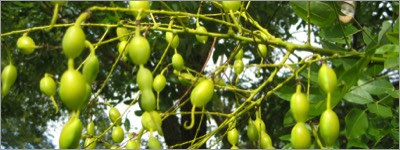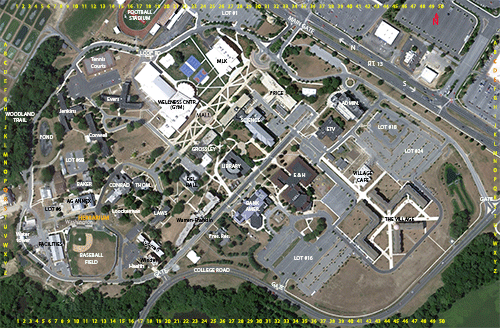*Styphnolobium japonicum

*Styphnolobium japonicum
JAPANESE PAGODA TREE
Fabaceae
Asia
Location: map coordinates: D-32 (near northeast corner of Price Building), N 39°11'15'' W 75°32'25''; and
M-29 (south of Jason Library entrance), N 39°11'8'' W 75°32'30''
Planting history: presently unknown.
Description:
*Non-native species (not native to Delaware)
JAPANESE PAGODA TREE
Fabaceae
Asia
Location: map coordinates: D-32 (near northeast corner of Price Building), N 39°11'15'' W 75°32'25''; and
M-29 (south of Jason Library entrance), N 39°11'8'' W 75°32'30''
Planting history: presently unknown.
Description:
- medium-sized deciduous tree
- formerly named Sophora japonica (synonym)
- common name “pagoda tree” probably because it was commonly planted around Buddhist temples; also known as Chinese scholar tree
- leaf compound, 7-17 leaflets
- flowers whitish-yellow, in hanging clusters (racemes); ca August (later than most other flowering trees)
- fruit a legume, with the pod distinctively constricted between the seeds, like the beads on a necklace (resembling a loment)
- native to China (not native to Japan, in spite of the common name Japanese pagoda tree); used in traditional Chinese medicine
*Non-native species (not native to Delaware)



There are 2 labeled Japanese pagoda trees.
HIT REFRESH TO START LOCATION GRAPHIC